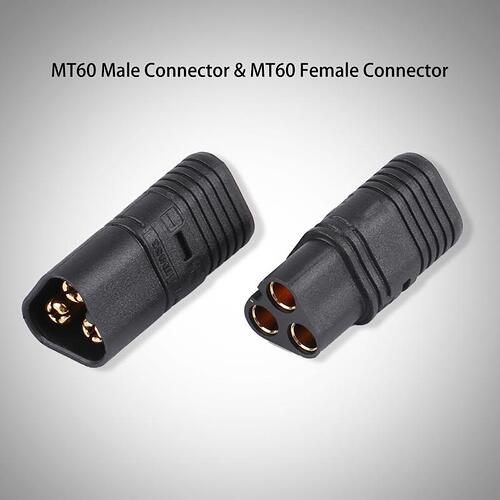You need to spin up the motor, then run the KV command.
Smh I always knew this in the back of my head but never really believed it as my 140kv build didn’t have a particularly impressive amount of torque. Glad we have numbers for this.
This is still kinda confusing me. If I’m running a 140kv and a 190kv motor at the same settings with the same ratio and everything, they’ll have the same amount of torque?
KV, and KT (voltage constant and torque constant, respectively) are inversely proportional - as one goes up, the other must go down. In an ideal world where winding resistance didn’t exist, and motors run at 100% efficiency, a lower KV motor would produce more torque at the same current due to its higher KT.
Just like KV is related to voltage (RPMs/volt), KT is related to current (newton-meters per amp).
The problem is, that for a given motor design, to decrease the KV, you have to wind more turns of wire on each stator tooth, and there’s only a finite amount of room in there. To fit more turns of wire, the wire has to be thinner. Thinner wire has more resistance, so lower KV motors generate more heat at a given current level.
This means that a lower KV motor should produce more torque due to its higher KT, but in practice, this gets offset by the increased winding resistance and heating, which means that lower KV motors can’t be pushed quite as hard.
I suppose this only applies if the wattage is the same… and since lower kv motors seem to produce less watts you probably don’t get a noticeable increase
Looks like for high voltage builds were gonna need 190kv motors that are made for high RPM, and gear drives with a really high ratio.6+
Or use other methods to lower the KV - stronger magnets, thinner rotor-stator gap, that kind of thing. Winding number is just one of the variables that can be adjusted.
Motors are too complicated 
Higher kv = more amps. Amps + higher voltage = more power which can be geared for torque or high speed.
At some point the motor won’t be able to disapate all that heat though, and the whole sealed motor trend just makes that worse. IMO we need like 190kv on 18s with an open motor and a cooling impeller in the back
Seems we’re getting a 24s capable vesc soon. I don’t think we have motors that wanna spin that fast lol. We’d need better low KV motors from what I understand.
Do I have to spin it with an external source? Because turning the motor with the vesc still results in 0KV
It sounds more like he’s playing with the remote, to toggle that beep. It’s not a great “dummy’s guide to ASS/VSS”.
What really matters is copper fill. More copper = better performance.
If we talk torque per amps, lower KV is better. However, as you mentioned, the higher resistance is working against a better performance. Copper losses are proportional to the square of the torque produced by the motor, and at low RPM and high load they are dominant. Less torque output and higher RPM seams to be the escape. But…
In our experience, winding the same motor to different KVs, there is a sweat spot for a certain design at a certain voltage. I guess a certain wire thickness allows for optimum copper fill while still being good with resistance values. Also spinning the motors too fast creates heat via eddy currents. Gearing too high and having too high RPMs on the shaft may work against best efficiency!
We heat the stator via fast spinning magnets (core losses)… This happens even without any load.
And in that case going higher in KV is no good idea. So it all is a game in between core and copper (resistive) losses.
Hi guys I know this is a bit of topic but did any of you guys ever used the mt60 connector on your build ?
I’ve seen people using the mr60 connector

And for what I’ve seen they look like the metal connector parts are the same size
And I was pondering buying the mt60 for my board because they are slicker
Any thoughts on that?
Wrong thread, but yes, I’ve used them to make adapters for my Loaded hubs, and on a build where I wanted to minimize horizontal space. They are just as big of a pain in the ass to solder as MR60s. Only difference is shape. Go for it if you want
Harder for me.
How long do you guys think that 3D printed (ABS) axle spacers would last? Having a hard time finding 10mm ID spacers in the states.
Honestly both are easy to solder lol
12awg wire is super easy
MT60 and MR60 will work the same, it just depends on your board. They both are made from the identical bullet connectors. Just make sure you get Amass brand connectors.
Once you know the correct method it’s doable. But sometimes even tinning the wire will make the 12AWG too thick to fit in the bullet. Or if you don’t have enough heat the wire strands will get stuck and bend away. I hate it!
